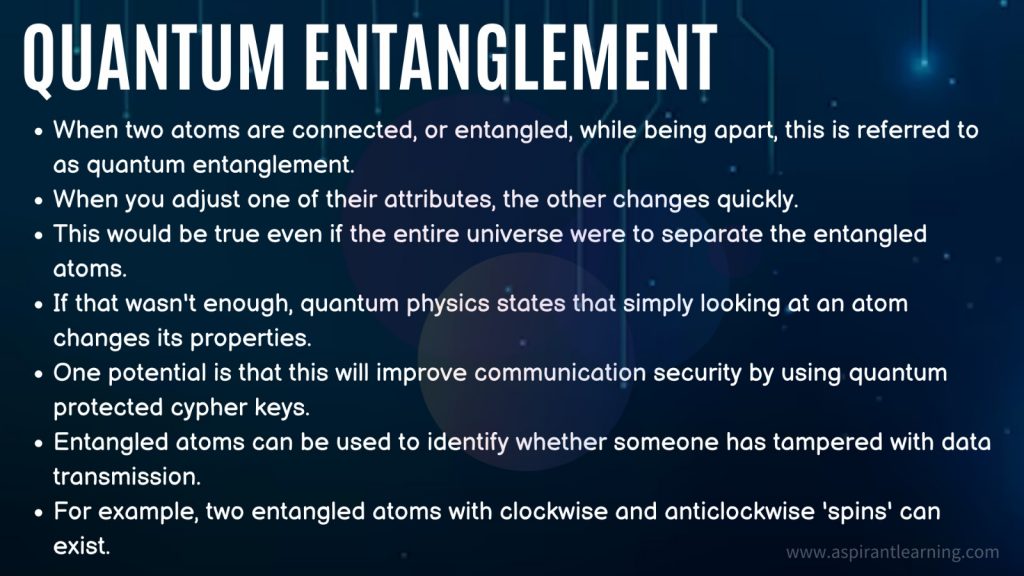News Highlight
DST Institute to partner Indian Navy in developing secure maritime communications using Quantum Technology.
Key Takeaway
- The Raman Research Institute (RRI) and the Indian Navy will soon collaborate to develop secure maritime communications using quantum technologies.
- The Weapons and Electronics Systems Engineering Establishment (WESEE) and RRI, an autonomous institute of the Department of Science and Technology (DST), have signed a Memorandum of Understanding (MoU).
- During a recent event in New Delhi, it was announced that it is an R&D facility of the Indian Navy.
- The five-year MoU was signed by Professor Tarun Souradeep, Director of RRI, and Vice Admiral Sandeep Naithani, Chief of Materiel, Indian Navy.
Quantum Technology
- About
- Quantum technology is a branch of science and engineering that studies and applies quantum mechanics principles.
- The field of physics known as quantum mechanics describes the behaviour of matter and energy at the atomic and subatomic levels.
- Four domains
- Quantum communication
- Quantum simulation
- Quantum computation
- Quantum sensing and metrology
Quantum Communication
- About
- It is an area of quantum technology that focuses on creating secure communication systems based on quantum mechanics concepts.
- Quantum communication employs a whole new way of encryption.
- QKD is the most common example of quantum communication.
- It enables two parties to generate a nearly unbreakable encryption key.
Mechanism of Quantum Communication
- Encoding Information
- Quantum bits (qubits) encode information and simultaneously exist in several states.
- This is referred to as superposition.
- Transmitting Information
- Encoded qubits are sent via a quantum communication channel, such as a fibre optic cable or a free-space link.
- Typically, qubits are transferred one at a time.
- Receiving Information
- The receiving party uses a quantum measurement device to measure the qubits.
- The measurement step reduces the qubit’s superposition to a single state, revealing the stored information.
- Detecting Eavesdropping
- Any attempt to eavesdrop on the transmission is one of the main elements of quantum communication.
- It will cause the quantum state of the qubit to be disturbed, making it immediately identifiable.
- The “no-cloning theorem” is a fundamental premise of quantum physics.
- Establishing a Secret Key
- The transmitting and receiving parties can establish a secret key for safe communication by exchanging a series of qubits.
- This key can be used with traditional encryption algorithms to secure the confidentiality and integrity of transmitted data.
Quantum Technology in Maritime Communication
- Secure Communication
- Quantum encryption can enable safe communication between ships and shore stations.
- It makes it more difficult for hackers to intercept or listen to communications.
- High-speed Communication
- Using quantum entanglement can enable speedier communication between ships and shore stations.
- Its purpose is to convey information instantly over large distances.
- This could be especially useful in distant places with limited standard communication channels.
- Precision Navigation
- Quantum sensors can increase navigation accuracy by precisely monitoring the Earth’s magnetic field.
- This could aid ships in navigating small channels, avoiding obstacles, and improving overall safety.
- Improved Weather Forecasting
- Complex simulations of weather patterns can be done on quantum computers.
- It can provide mariners with precise and timely information about impending storms or other harmful weather conditions.

Way Forward
- Because quantum communication technologies, such as QKD, are still in their early stages of development and application, scaling them up is a significant difficulty.
- Pilot projects can be formed to put the technology to the test in real-world scenarios and to fine-tune the implementation process.
- The development and deployment of quantum communication systems is costly. Adequate R&D funding could result in more cost-effective solutions.
- Because quantum communication technologies are not yet standardised, different systems find connecting challenging.
Pic Courtesy: Physics World
Content Source: PIB



